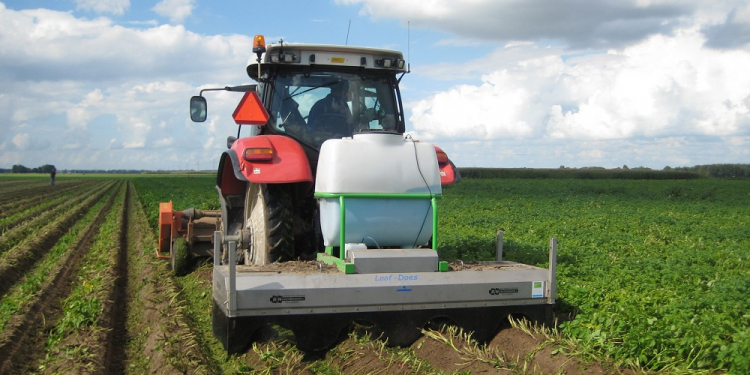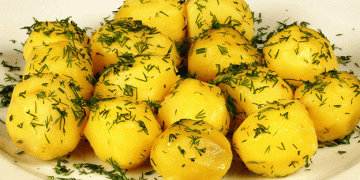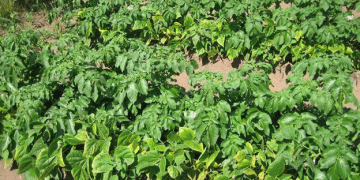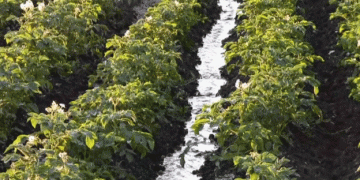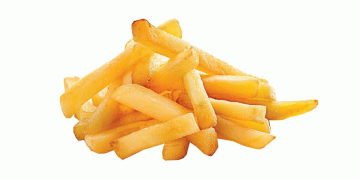In seed potatoes, haulm killing is started in July. Reglone and Finale are no longer permitted for the chemical haulm killing of potatoes. Funded by the Arable Farming Sector Organization through the Plant Health Action Plan, Delphy conducted research into alternative means and methods in 2019 and 2020.
After two years of research, it is clear that the practice must be able to cope with the current possibilities with good knowledge of the facts. However, it is slower with only full-field treatments.
Only spraying full fields
In addition to achieving the correct size grading and stopping virus transmission by aphids, rapid foliage killing is also important to limit the risk of contamination of the tubers by bacterial diseases such as Erwinia and Phoma.
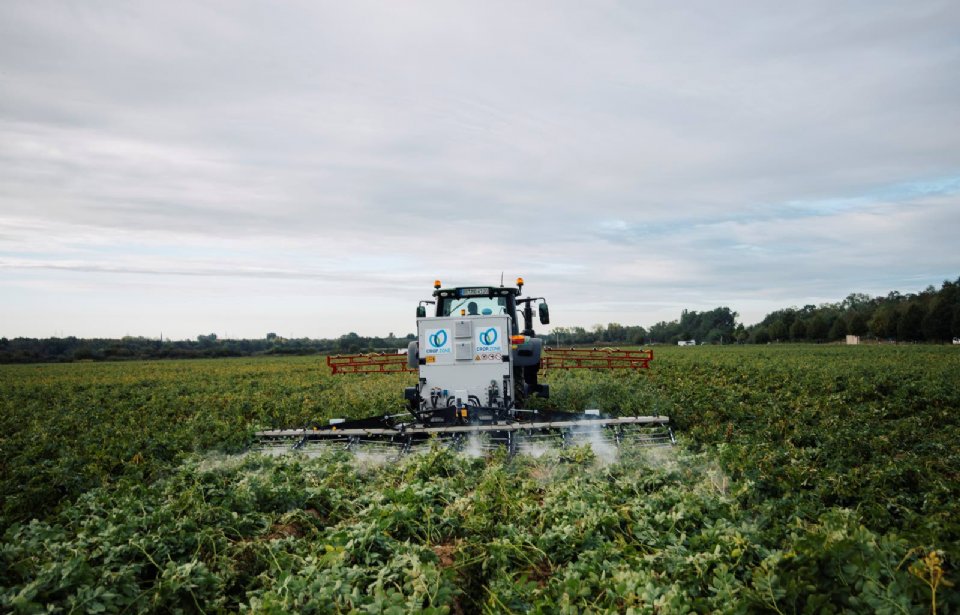
Spray schedules sprayed with a conventional sprayer with Quickdown and Spotlight Plus and a high spray volume were compared in a trial at Emmeloord with air support and the WingsSprayer with a low spray volume. The conditions during the spraying were warm with a low RH. It has been found that under these conditions a high spray volume worked clearly better than a low spray volume: 385 l/ha was sufficient, 215 l/ha was too low.
Chart one below shows the effect on stem dieback. The magazine responded the same. The minimum volume for proper operation cannot be specified, as it depends on the circumstances. The order of Spotlight and Quickdown in the spraying schedule had no effect. If the sprays with two Quickdown and one Spotlight do not work well enough, it is possible to carry out another spray with Affinity Plus.
Mechanical methods
In the study, no spraying was carried out on the mechanical objects prior to the folding to stop the crop. This allowed us to better visualize differences between objects. In graph two below, it can be seen that the differences were large on August 6 (eight days after the first treatment) but had already subsided by August 17 (ten days after the last treatment). The Spotlight spraying immediately after the blow (orange line) worked the fastest thanks to the favorable conditions. The lines of the other objects almost coincide.
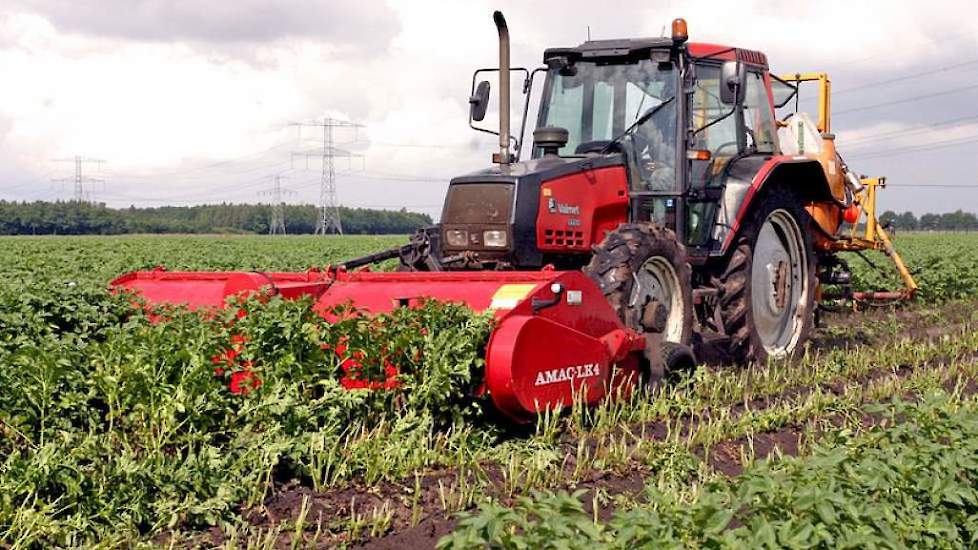
After a first spraying to stop the crop, it is preferable to pull foliage. In second place is haulm flapping and third to continue with full-field spraying. Full-field spraying can have the advantage that the ground is not compacted every three meters and the risk of water between the ridges is avoided. In itself, haulm flapping works faster than just full-field spraying. By combining haulm flapping with Spotlight spraying with the Haulm-Does, full-field spraying is saved.
Conclusions and advice
Full fields only:
- Start earlier with haulm killing.
- Start with Quickdown or Spotlight Plus.
- Adjust the spray volume to the conditions. At a low RH and rapid evaporation of the spray droplets, a volume of at least 400 l/ha is required.
- Ensure a good intake, in a rainy and cloudy period, seed potatoes can be sprayed in the evening. Due to the long period of daylight in the summer, the operation will be good.
- If necessary, a fourth spray can be carried out with Affinity Plus.
Mechanical techniques
After spraying to stop the crop:
- haulm pulling
- Haulm flaps in combination with or followed by one or two sprays
A good result was achieved with the combination of haulm flaps with Loof-Does. The low spray volume is also no problem at a low RH. Under favorable conditions, the dose of Spotlight Plus or Quickdown can be reduced by 25 to 50 percent.
But also
- Pre-sprout for a smooth start
- Limit nitrogen a bit
Field day seed potatoes
On the seed potato field day on 8 July in Swifterbant, the research results will be further explained and Delphy advisors will be present. Registration is required due to corona .
Source: Delphy
